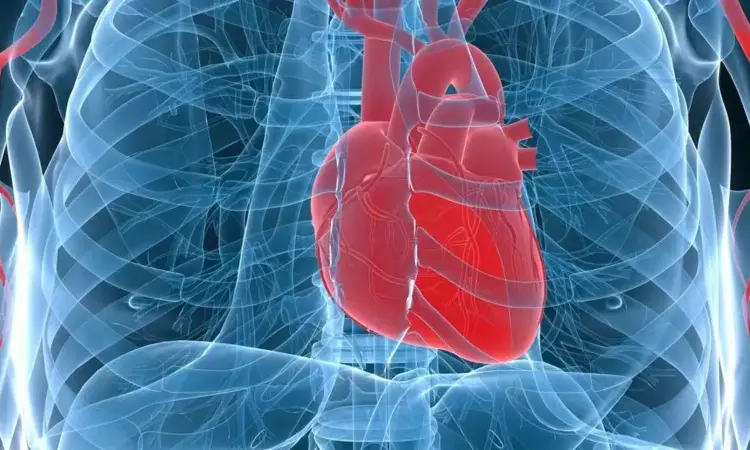- Home
- Medical news & Guidelines
- Anesthesiology
- Cardiology and CTVS
- Critical Care
- Dentistry
- Dermatology
- Diabetes and Endocrinology
- ENT
- Gastroenterology
- Medicine
- Nephrology
- Neurology
- Obstretics-Gynaecology
- Oncology
- Ophthalmology
- Orthopaedics
- Pediatrics-Neonatology
- Psychiatry
- Pulmonology
- Radiology
- Surgery
- Urology
- Laboratory Medicine
- Diet
- Nursing
- Paramedical
- Physiotherapy
- Health news
- Fact Check
- Bone Health Fact Check
- Brain Health Fact Check
- Cancer Related Fact Check
- Child Care Fact Check
- Dental and oral health fact check
- Diabetes and metabolic health fact check
- Diet and Nutrition Fact Check
- Eye and ENT Care Fact Check
- Fitness fact check
- Gut health fact check
- Heart health fact check
- Kidney health fact check
- Medical education fact check
- Men's health fact check
- Respiratory fact check
- Skin and hair care fact check
- Vaccine and Immunization fact check
- Women's health fact check
- AYUSH
- State News
- Andaman and Nicobar Islands
- Andhra Pradesh
- Arunachal Pradesh
- Assam
- Bihar
- Chandigarh
- Chattisgarh
- Dadra and Nagar Haveli
- Daman and Diu
- Delhi
- Goa
- Gujarat
- Haryana
- Himachal Pradesh
- Jammu & Kashmir
- Jharkhand
- Karnataka
- Kerala
- Ladakh
- Lakshadweep
- Madhya Pradesh
- Maharashtra
- Manipur
- Meghalaya
- Mizoram
- Nagaland
- Odisha
- Puducherry
- Punjab
- Rajasthan
- Sikkim
- Tamil Nadu
- Telangana
- Tripura
- Uttar Pradesh
- Uttrakhand
- West Bengal
- Medical Education
- Industry
Inactivity during childhood associated with heart damage in later life

Finland: A recent study has found that sedentary time accumulated from childhood to young adulthood was associated with heart damage-even in those with normal weight and blood pressure.
The study, presented at ESC (European Society of Cardiology) Congress 2023, revealed that hours of inactivity during childhood could be setting the stage for heart attacks and strokes later in life
Hours of inactivity during childhood could be setting the stage for heart attacks and strokes later in life, according to research presented at ESC Congress 2023. The study found that sedentary time accumulated from childhood to young adulthood was associated with heart damage-even in those with normal weight and blood pressure.
“All those hours of screen time in young people add up to a heavier heart, which we know from studies in adults raises the likelihood of heart attack and stroke,” said study author Dr. Andrew Agbaje of the University of Eastern Finland, Kuopio, Finland. “Children and teenagers need to move more to protect their long-term health.”
This was the first study to investigate the cumulative effect of smartwatch-assessed sedentary time in young people and cardiac damage later in life. It was conducted as part of the Children of the 90s study, which began in 1990/1991 and is one of the world’s largest cohorts with lifestyle measurements from birth.3
At 11 years of age, children wore a smartwatch with an activity tracker for seven days. This was repeated at 15 years of age and again at 24 years of age. The weight of the heart’s left ventricle was assessed by echocardiography, a type of ultrasound scan, at 17 and 24 years of age and reported in grams relative to height (g/m2.7). The researchers analysed the association between sedentary time between 11 and 24 years of age and heart measurements between 17 and 24 years of age after adjusting for factors that could influence the relationship including age, sex, blood pressure, body fat, smoking, physical activity and socioeconomic status.
The study included 766 children, of whom 55% were girls and 45% were boys. At 11 years of age, children were sedentary for an average of 362 minutes a day, rising to 474 minutes a day in adolescence (15 years of age), and 531 minutes a day in young adulthood (24 years of age). This means that sedentary time increased by an average of 169 minutes (2.8 hours) a day between childhood and young adulthood.
Each one-minute increase in sedentary time from 11 to 24 years of European Society of Cardiologyage was associated with a 0.004 g/m2.7 increase in left ventricular mass between 17 to 24 years of age. When multiplied by 169 minutes of additional inactivity this equates to a 0.7 g/m2.7 daily rise – the equivalent of a 3 gram increase in left ventricular mass between echocardiography measurements at the average height gain. A previous study in adults found that a similar increase in left ventricular mass (1 g/m2.7) over a seven-year period was associated with a two-fold increased risk of heart disease, stroke, and death.4
Dr. Agbaje said: “Children were sedentary for more than six hours a day and this increased by nearly three hours a day by the time they reached young adulthood. Our study indicates that the accumulation of inactive time is related to heart damage regardless of body weight and blood pressure. Parents should encourage children and teenagers to move more by taking them out for a walk and limiting time spent on social media and video games. As Martin Luther King Jr. once said, ‘If you can't fly, run. If you can't run, walk. If you can't walk, crawl. But by all means keep moving.’”
Dr Kamal Kant Kohli-MBBS, DTCD- a chest specialist with more than 30 years of practice and a flair for writing clinical articles, Dr Kamal Kant Kohli joined Medical Dialogues as a Chief Editor of Medical News. Besides writing articles, as an editor, he proofreads and verifies all the medical content published on Medical Dialogues including those coming from journals, studies,medical conferences,guidelines etc. Email: drkohli@medicaldialogues.in. Contact no. 011-43720751


